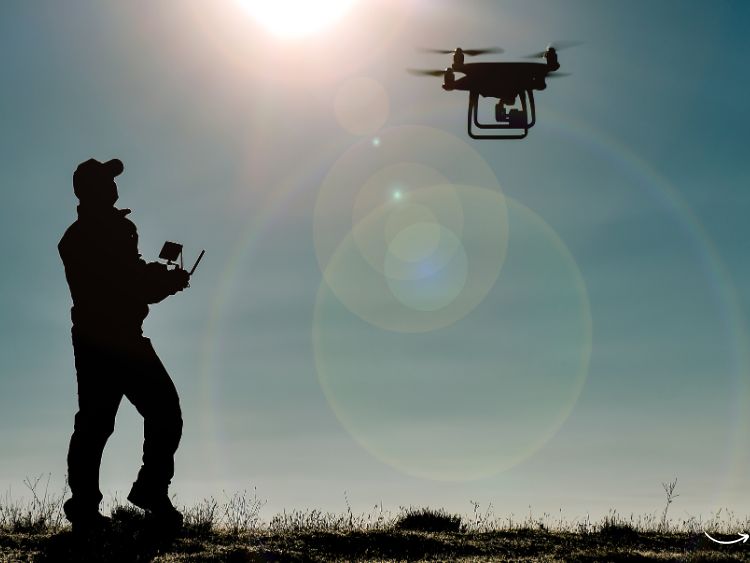Drones, once the domain of hobbyists and tech enthusiasts, have swiftly entered the mainstream, transforming industries from agriculture to real estate. Their ability to capture high-resolution images and videos from angles previously unattainable makes them invaluable for various tasks. One such task is insurance inspections. But what exactly are drone insurance inspections, and why are they becoming so crucial? Let’s dive into the world of drone insurance inspections and explore how these high-flying gadgets are revolutionizing the insurance industry.
What Are Drone Insurance Inspections?
Drone insurance inspections involve using drones to assess properties, vehicles, or other insured assets for damage, risk, and overall condition. Insurers utilize drones to perform thorough inspections efficiently, accurately, and safely. These inspections are particularly useful in evaluating difficult-to-reach areas, such as rooftops, large estates, and industrial sites.
Benefits of Drone Insurance Inspections
Efficiency and Speed
One of the standout benefits of using drones for insurance inspections is the efficiency they offer. Traditional methods can be time-consuming and often require multiple visits. Drones can cover large areas quickly, providing high-quality data in a fraction of the time.
Safety First
Safety is another significant advantage. Inspecting rooftops or hazardous sites poses risks to human inspectors. Drones can safely navigate these areas, capturing detailed images without putting anyone in harm’s way.
Cost-Effectiveness
Drones reduce the need for specialized equipment like scaffolding or cherry pickers, leading to significant cost savings. They also cut down on labor costs, as fewer personnel are needed for inspections.
Enhanced Accuracy
With high-resolution cameras and advanced sensors, drones can capture precise details that might be missed during manual inspections. This accuracy ensures that insurers have reliable data to make informed decisions.
Applications of Drone Insurance Inspections
Property Damage Assessment
After natural disasters like hurricanes, floods, or earthquakes, drones can quickly survey and document damage, helping insurers process claims faster. They provide a comprehensive overview, capturing images from various angles to ensure nothing is overlooked.
Roof Inspections
Inspecting roofs can be dangerous and challenging. Drones eliminate the need for inspectors to climb ladders or navigate slippery surfaces. They can easily identify issues like leaks, broken shingles, or structural damage.
Agricultural Inspections
Farmers and insurers use drones to monitor crop health and assess damage caused by pests or weather. This data helps in determining insurance claims and planning for future agricultural practices.
Construction Monitoring
For construction sites, drones offer a bird’s-eye view, monitoring progress and ensuring compliance with safety standards. They can also document any damages or defects that might arise during the construction process.
How to Conduct a Drone Insurance Inspection
Pre-Inspection Preparations
- Check Regulations: Ensure compliance with local aviation laws and obtain necessary permissions.
- Inspect the Drone: Conduct a thorough check of the drone’s condition, including battery levels, camera functionality, and sensors.
- Plan the Flight Path: Outline the areas to be inspected and plan the flight path to cover all necessary points efficiently.
Conducting the Inspection
- Launch and Stabilize: Start the drone and allow it to stabilize at the desired altitude.
- Capture Images and Videos: Use the drone’s camera to capture high-resolution images and videos of the inspection area.
- Monitor in Real-Time: Use a live feed to monitor the inspection and adjust the flight path if needed.
Post-Inspection Analysis
- Review Footage: Analyze the captured images and videos to identify any issues or damages.
- Generate Reports: Create detailed reports with annotated images highlighting areas of concern.
- Share with Stakeholders: Provide the inspection reports to the relevant stakeholders, including insurance companies and property owners.
Challenges and Solutions in Drone Insurance Inspections
Weather Conditions
Drones are sensitive to weather conditions such as strong winds, rain, and fog. To mitigate this, inspections should be scheduled during favorable weather, and drones with weather-resistant capabilities should be used.
Battery Life
Limited battery life can restrict the duration of drone flights. Carrying spare batteries and planning efficient flight paths can help overcome this challenge.
Regulatory Hurdles
Navigating the regulatory landscape can be tricky. Staying updated on local and national drone regulations and obtaining the necessary permits is essential for smooth operations.
FAQs About Drone Insurance Inspections
- Are drone insurance inspections legal?
Yes, as long as they comply with local aviation regulations and the drone operators are licensed.
- How much do drone insurance inspections cost?
The cost varies depending on the size of the inspection area, the complexity of the task, and the drone technology used. However, they are generally more cost-effective than traditional methods.
- What kind of drones are used for insurance inspections?
Drones equipped with high-resolution cameras, thermal imaging, and other advanced sensors are commonly used for insurance inspections.
- How long does a drone insurance inspection take?
It depends on the size and complexity of the inspection area. However, most inspections can be completed within a few hours.
- Can drones be used for all types of insurance inspections?
While drones are versatile, their use may be limited in some scenarios, such as indoor inspections or areas with heavy electromagnetic interference.
Conclusion
Drone insurance inspections are transforming the insurance industry by offering a faster, safer, and more cost-effective way to assess damages and risks. From property damage assessment to agricultural inspections, drones provide unparalleled accuracy and efficiency. As drone technology continues to advance, their applications in insurance inspections will only expand, making them an indispensable tool for insurers worldwide.
Authoritative Links
- Federal Aviation Administration (FAA) – https://www.faa.gov
- Association for Unmanned Vehicle Systems International (AUVSI) – https://www.auvsi.org
- Drone Industry Insights – https://droneii.com
- DJI (Drone Manufacturer) – https://www.dji.com
- Insurance Information Institute – https://www.iii.org
By integrating drones into their operations, insurers can stay ahead of the curve, providing faster and more accurate services to their clients. So, if you haven’t considered drone insurance inspections yet, it’s high time to take to the skies and embrace this game-changing technology!




